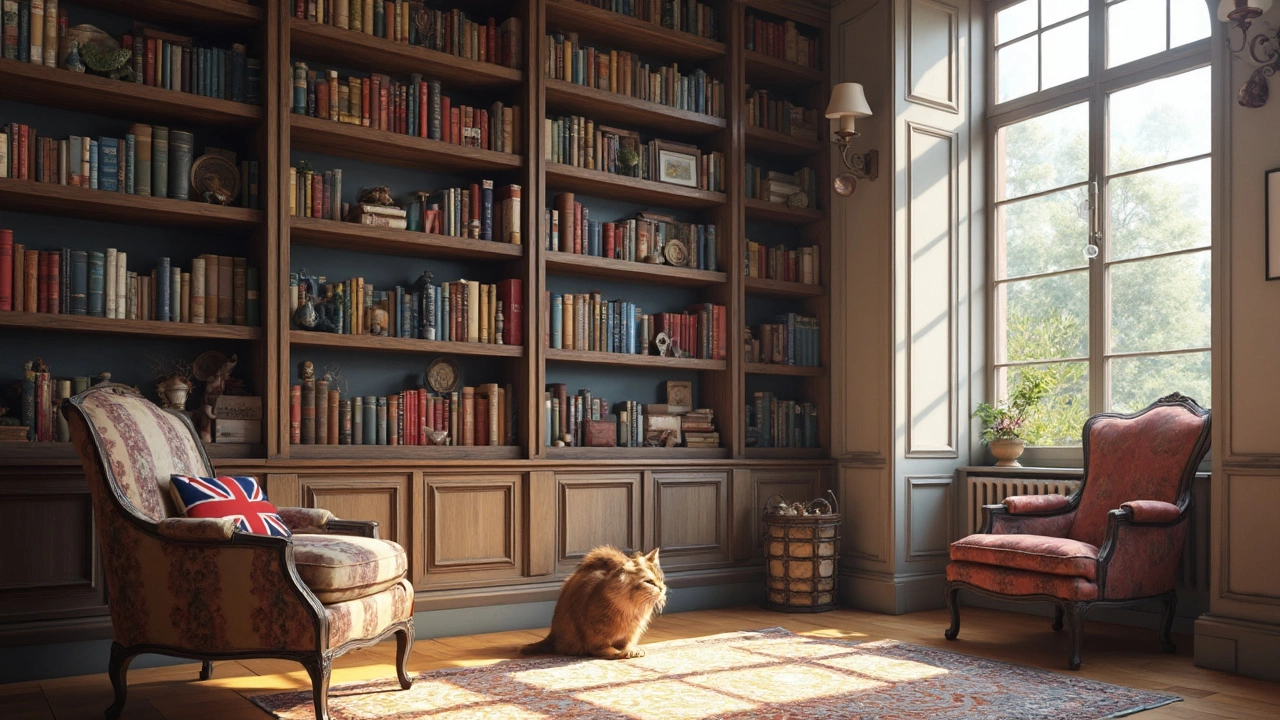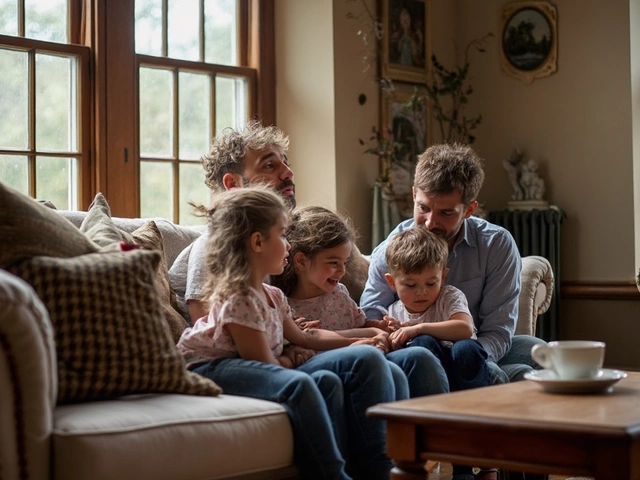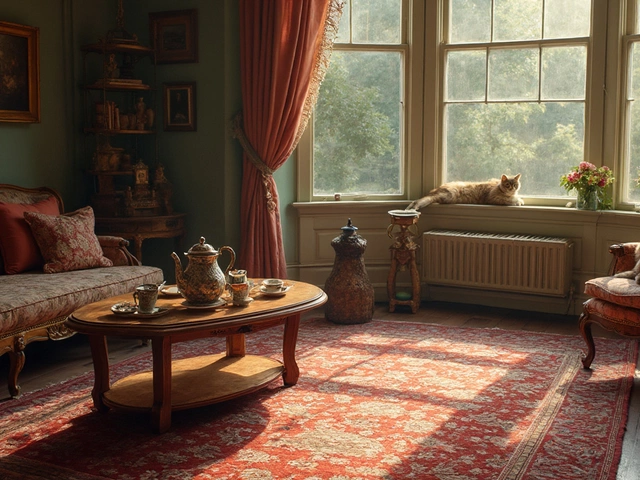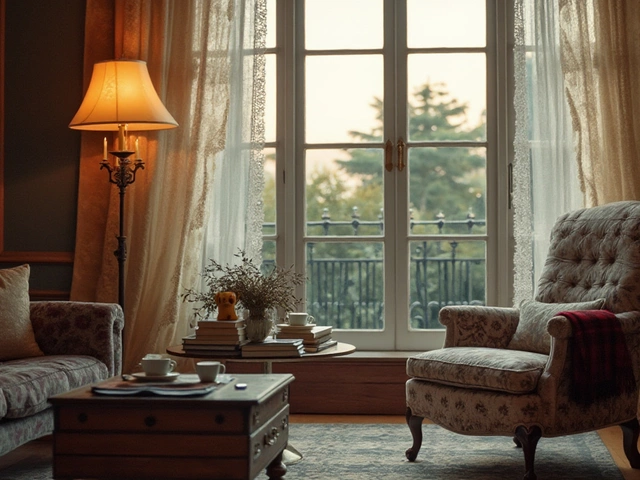Thinking about lining your walls with books from the ground up? Awesome idea. But before you pull out your credit card, you'll want to know what it actually costs to install floor-to-ceiling bookshelves—because there’s a lot more to it than just buying some shelves.
The price changes fast depending on what materials you choose, whether you’re grabbing something pre-made or going totally custom, and who’s doing the actual work (hint: paying a pro is not cheap, but DIY isn’t always the bargain you expect). One detail people overlook? Getting those shelves safely anchored—especially if you have a climbing cat like Whiskers, trust me, you do not want wobbly bookcases.
The real cost also comes from all the little extras, like hardware, paint, and maybe new lighting to show off your collection. And let’s not forget about the biggest wallet drainer—labor. Whether you hire a skilled carpenter or do it yourself, the difference in cost can be huge. Ready to see what you’re really in for? Let’s break it all down.
- What Impacts the Price?
- Pre-Built vs. Custom: Big Cost Differences
- Labor: Hiring Pros or Doing It Yourself
- Saving Money Without Compromising Quality
- Other Hidden Costs and Practical Tips
What Impacts the Price?
The first thing to know is that floor to ceiling bookshelves can swing wildly in price. Why? It’s all about three big factors: materials, size, and who’s doing the work.
Materials are the number one cost driver. Solid hardwood (think oak or maple) looks amazing but comes at a premium—sometimes $200–$500 per linear foot installed. MDF or plywood will cut the price in half, but they aren’t as tough. If you want to go even cheaper, there’s always particle board, but you’ll give up some durability.
The next detail: custom versus prefab. Pre-built shelves from IKEA or Home Depot have set sizes and prices, usually a few hundred bucks for an 8-foot section. Custom builds can easily double or triple that, especially if your space has weird dimensions or you need fancy extras like crown molding or built-in lighting.
Here’s a table to make it clearer:
| Material | Cost (per linear foot installed) |
|---|---|
| Solid Wood | $200–$500 |
| Plywood/MDF | $100–$250 |
| Particle Board | $70–$150 |
Don’t forget about size. The taller and wider the bookshelf installation, the more you’ll pay. Twelve-foot ceilings or extra-deep shelves? Expect the upper end of those price ranges.
Finish and hardware also sneak up on the bill. Stained or painted finishes, glass doors, drawer pulls, and heavy-duty mounting gear all add to the final tab. Want some real-life drama? Custom details like rolling ladders or hidden compartments get expensive fast.
And if you’re in a city, labor rates are just plain higher. Contractors in a place like New York or San Francisco can charge double the labor costs you’ll see in rural areas.
Pre-Built vs. Custom: Big Cost Differences
If you’re eyeing floor to ceiling bookshelves, there’s a huge difference in price between pre-built and custom options. Pre-built bookcases are the IKEA-type setups you buy off the shelf, usually available in standard heights and widths. You can snap them together and nudge them up against the wall without breaking the bank. Most pre-built shelves run between $180 and $600 per unit for decent quality, and you’ll probably need a few to fill an entire wall.
But there’s a catch: pre-built shelves almost never fit perfectly from floor to ceiling or wall to wall. You’ll end up with awkward gaps unless you’re crazy lucky with your room’s dimensions. They’re great for renters or if you want something quick and affordable, but they may not give that seamless, built-in look everyone dreams about.
Custom bookshelves are a whole different world. Here, a carpenter or cabinetmaker builds the shelves to fit your space exactly, using the materials and layout you want. The cost? Expect to pay anywhere from $1,200 on the low end up to $8,000 (or more) for high-end wood, tons of shelves, or tricked-out features like glass doors or built-in lighting.
| Option | Typical Price Range | Pros | Cons |
|---|---|---|---|
| Pre-Built | $180–$600 per unit | Budget-friendly, easy to find, DIY-friendly | Doesn't always fit right, limited design options |
| Custom | $1,200–$8,000 total | Exact fit, any style or size, built-in look | Expensive, longer wait, pro installation needed |
Custom jobs also open the door to cool stuff, like hidden cabinets, soft-close doors, and whatever wood or finish you want. If resale value matters, built-in shelves can boost your home’s value—the National Association of Realtors mentions that well-designed built-ins are a top request for buyers looking for functional space and style.
Your final choice depends on budget, time, and how picky you are about fit and finish. Pre-builts will save you cash (and are fine for most folks), but custom shelves really shine in rooms with weird measurements or if you just want that wow factor. Either way, plan for a bit more than the sticker price—materials and labor can sneak up fast.
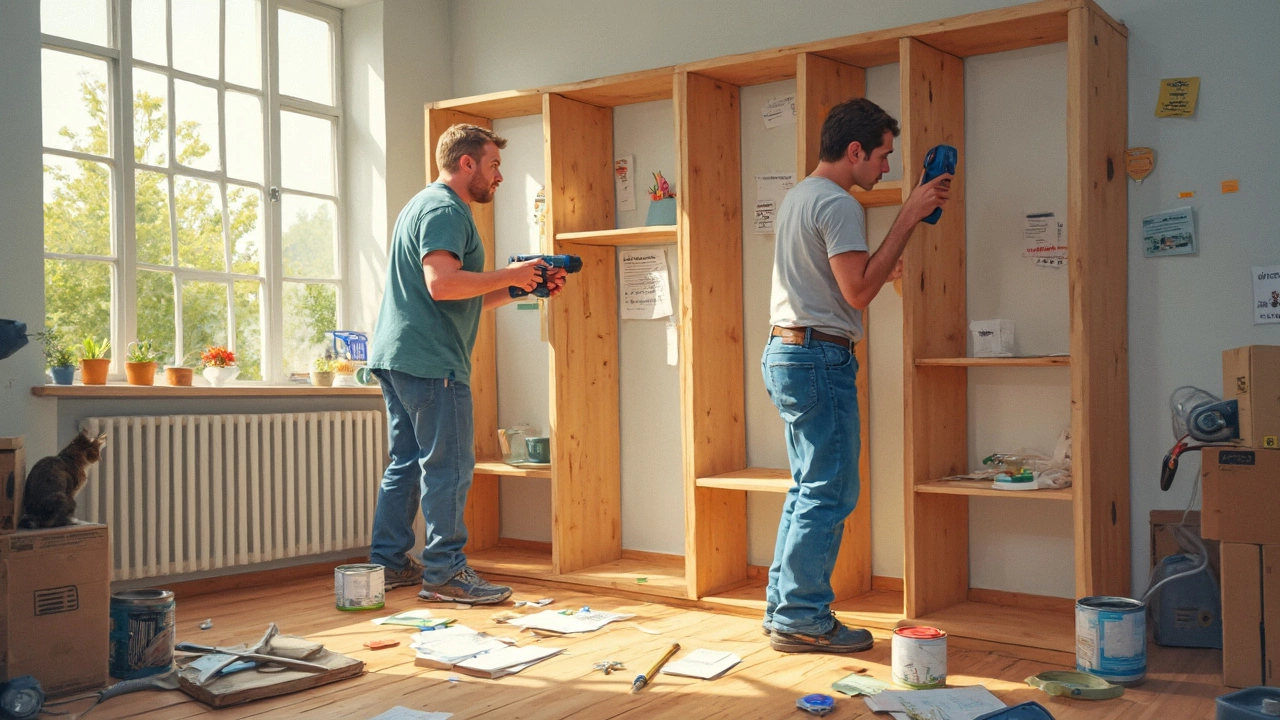
Labor: Hiring Pros or Doing It Yourself
Let’s get real—labor can make or break your bookshelf budget. If you’re trying to figure out how much it costs to install floor to ceiling bookshelves, this is the biggest variable.
Hiring a pro? Carpenters and built-in specialists usually charge by the project, but estimates often land between $60 and $120 per hour. For a single wall of custom shelves, you’re looking at 15 to 40 hours of work depending on design, details, and whether your walls are straight (old houses get expensive fast). That comes out to $1,500 to $4,500 just for labor—before materials. High-end custom work in big cities can easily double these numbers. Some specialized companies will quote a flat rate, but it usually adds up the same way once you factor in everything.
Rather roll up your sleeves and DIY? You could shave off thousands in labor. If you’re handy with power tools, installing a pre-made bookshelf kit or even building simple shelves from scratch can be done for the cost of materials and (a lot of) your time. For most people, a basic wall takes about two weekends to finish—assuming you have the tools and the patience for a few trips to the hardware store.
Here’s what to consider before deciding:
- Skill Level: If you’ve never used a saw, built-ins aren’t the place to learn. Misplaced shelves, uneven gaps, or weak supports are expensive mistakes.
- Safety: Floor-to-ceiling bookshelves are heavy. Improper anchoring is a real risk, especially if you have kids or pets (like my daredevil cat, Whiskers). Pros know how to secure them to the studs.
- Tools: You’ll need more than a screwdriver—think stud finder, level, power drill, saw, and clamps. Renting or buying tools adds up if you don’t already have them.
- Permits: Major built-ins, especially if they change the structure, might need approval in some areas. Professionals usually handle this paperwork.
| Installation Type | Labor Cost Estimate | Time Required |
|---|---|---|
| Pro Installation (Custom) | $1,500–$4,500 | 2–5 days |
| Pro Installation (Pre-made) | $500–$2,000 | 1–2 days |
| DIY (Materials Only) | $300–$1,000 | 2–4 days (plus planning) |
Bottom line: DIY saves cash if you have the know-how and patience, but hiring a pro saves your sanity—and possibly your walls. Either way, labor is where the biggest cost differences show up when you’re pricing out floor to ceiling bookshelves.
Saving Money Without Compromising Quality
So, how do you get those floor to ceiling bookshelves looking sharp without draining your bank account? There are some smart moves you can make that won’t leave you with wobbly shelves or chipped paint a year later.
First, consider using ready-to-assemble (RTA) units from major stores. IKEA’s Billy series, for example, can be stacked and trimmed out with molding so they look custom. That trick alone can take the cost down from $3,000+ to well under $1,000 for an 8-foot wall. You might have to do a bit of hacking—things like adding a plywood base or extra support—but you end up with fancy-looking shelves for a fraction of the custom price.
Materials matter just as much. Solid wood costs a lot, but high-quality MDF is sturdy, smooth, and much cheaper. Stick to plywood over particle board if you can, since it holds screws better—especially if your shelves are loaded with heavy hardcovers. Paint-grade materials are cheaper, and after a few coats of a decent paint, no one can tell if you skipped the expensive wood.
When it comes to labor, do what you can handle—and let the pros handle the tricky stuff. Hiring a carpenter just to install your RTA bookshelves and add the crown molding will usually cost less than fully custom work from scratch. Some folks grab a friend and do the assembly on the weekend, then hire a pro for just the finishing details like securing to the studs or doing touch-up paint.
- If you already have a basic bookshelf, buy a matching unit and stack or connect it to add height. Always secure tall bookshelves to the wall to avoid tip-over accidents (especially if you live with kids or cats that think they’re ninjas).
- Skip built-in lighting for now and use affordable LED puck lights or strips. These look slick, add ambiance, and save on hefty electrician fees.
- Shop around for trim pieces and hardware—big box stores almost always have sales, and you can find solid deals online for handles or brackets.
- For painting, use a foam roller to get a nice finish. If you’re not picky, a DIY paint job looks solid if you take your time with prep and sanding.
Check out this quick cost comparison—a rough look at DIY vs. custom install for 8-foot wide bookshelf installation:
| Option | Material Cost | Estimated Labor | Total Cost |
|---|---|---|---|
| DIY w/ IKEA units | $450 - $800 | $0 (your sweat!) | $450 - $800 |
| RTA + Pro Trim Out | $600 - $1,000 | $400 - $800 | $1,000 - $1,800 |
| Fully Custom by Carpenter | $1,500 - $3,000 | $1,000 - $2,000 | $2,500 - $5,000 |
Bottom line: You don’t have to blow your whole savings on custom bookcases. With a mix of smart choices, a bit of sweat, and some handy shortcuts, you can make your wall look like a million bucks—while keeping enough cash left for your next book-haul… or more cat toys (Whiskers votes for cat toys, by the way).

Other Hidden Costs and Practical Tips
This is the part everyone forgets until they're standing in checkout with a cart way over budget. Floor to ceiling bookshelves sound simple, but lots of sneaky costs pop up once you start planning (or building). First off: measuring mistakes. Even a tiny error here means either wasted wood or frustrating gaps. Get a metal tape measure and double-check every time—don’t rely on memory or eyeballing it.
Another surprise is wall prep. Not all walls are straight. If yours are wonky (old houses, anyone?), expect to spend on shims, extra caulk, or even some drywall repair. If you rent, you’ll also want to consider how you’ll fix things up when you move out. And always ask—hidden electrical wires behind walls can turn a quick job into a longer, more expensive one if you need to move outlets or switches.
Installation is honestly just the beginning. You’ll need to budget for paint or stain (a gallon covers ~350 sq. ft., but built-ins eat up more paint than you expect), good wall anchors (especially if you have pets or kids climbing), trim pieces, and finishing hardware. Sometimes homeowners end up spending $200-$350 just on knobs, pulls, and brackets for a large project. Check the math in your plan…and then add a buffer.
One big thing most folks forget is lighting. Want those books to look like they do on Instagram? Add LED strip lights or puck lights, and plan for an electrician if you don’t want dangling cords spoiling the look. LED kits for bookshelves often cost $25-60 per shelf, installed.
| Hidden Cost | Low Estimate | High Estimate |
|---|---|---|
| Wall anchors & fasteners | $25 | $120 |
| Paint/Stain & Supplies | $60 | $180 |
| Lighting (LED kits) | $50 | $300 |
| Trim & Finish Hardware | $100 | $350 |
| Electrical work | $180 | $600+ |
Want to keep costs under control? Hit up local salvage yards for wood or trim offcuts, look for overstock lighting online, or ask neighbors if anyone has leftover paint. And if you have a cat like Whiskers, be sure to plan for extra stability—bolting shelves directly into studs is safer than any wall anchor. Trust me, one playful leap and you’ll be glad you went the extra mile on safety.
Most important tip: don’t let the little costs sneak up on you. Write down every item you think you’ll need, break out your calculator, and tack on an extra 10-15% for random surprises. That’s how you end up proud of your floor to ceiling bookshelves—instead of grumpy and broke at the end.
